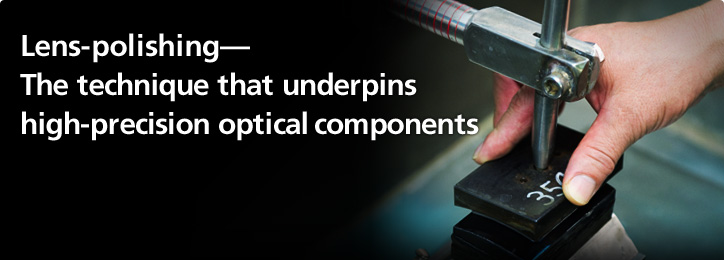
Masahiro Kudo
Joined Nikon in 1974. Since then he has been single-mindedly refining his lens-polishing technique. Appointed as a Nikon Master Craftsperson in April 2008.
The work of lens-polishing involves shaping optical glass so that it conforms exactly to the requirements of the lens design in terms of size and curvature. Normally, lenses are polished using a polishing machine, in which the optical glass is rotated and brought into contact with a polishing plate.
In the workplace where the lens-polishing takes place, the terms "contact," "stickiness," and "fit" are used to describe the relationship between the change in shape corresponding to the resistance that arises when the polishing plate passes over the surface of the optical glass, and the state of the contact between the polishing plate and the lens. When the "contact" between the polishing plate and the optical glass is only partial and not uniform, or "sticky," the phenomenon where the rotating band around the polishing plate abrades so that the optical glass is drawn too close to the plate, is described as a "poor fit". While "contact" and "stickiness" are acceptable, the ideal state is a "good fit," in which the polishing plate and the optical glass are touching one another uniformly.
By touching the rotating polishing plate from above and feeling the power transmitted to his hand, Masahiro Kudo can distinguish between "contact," "stickiness" and "fit."

